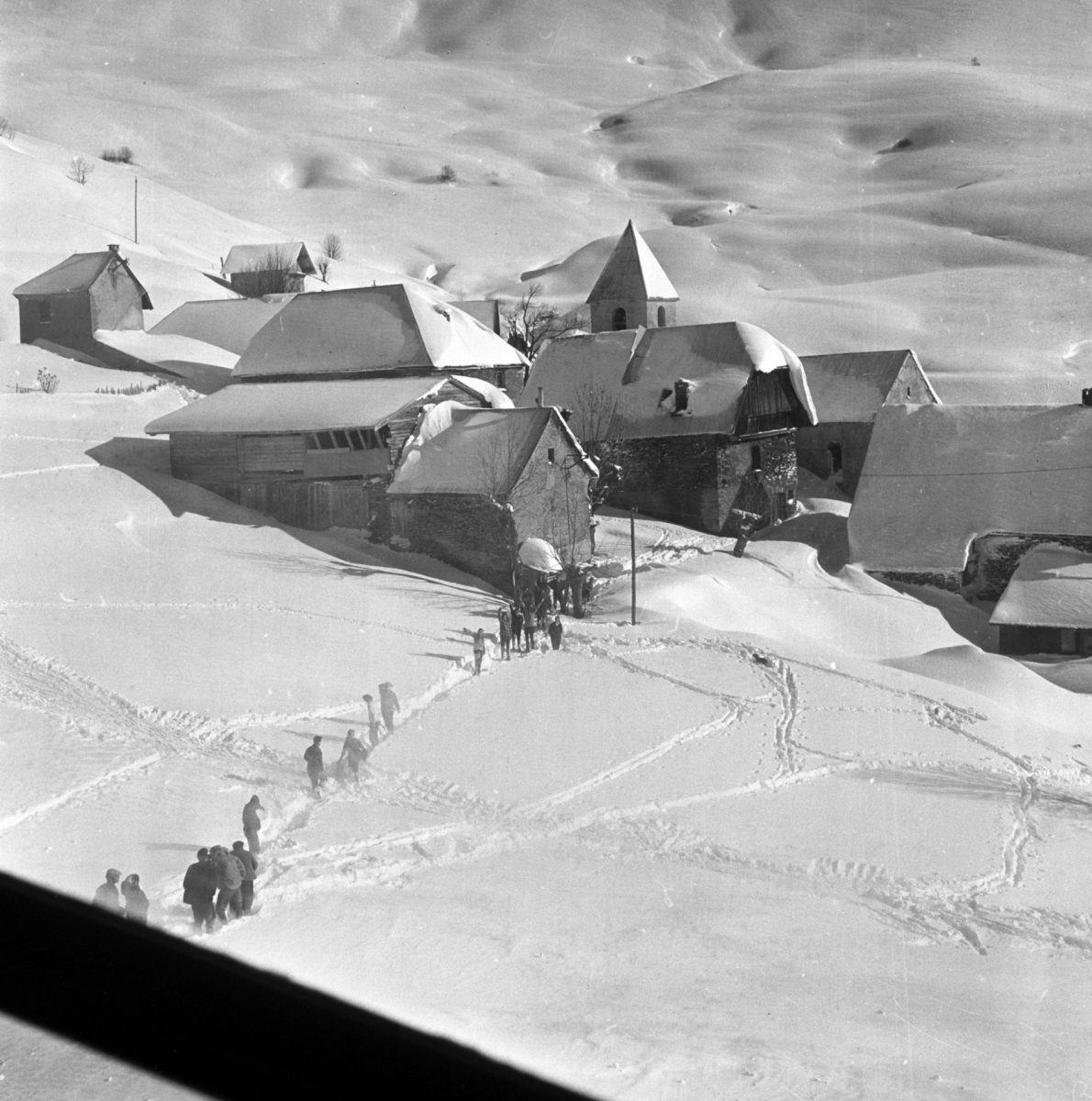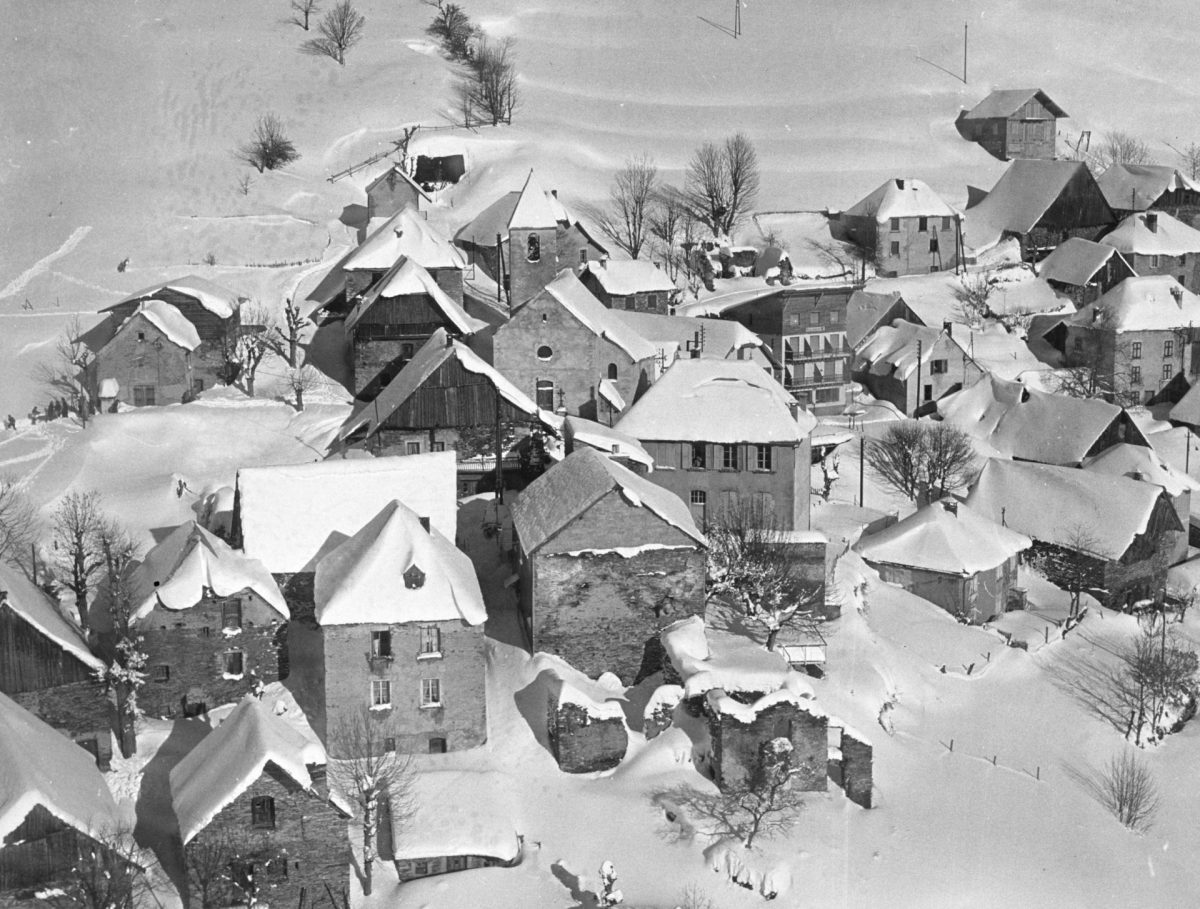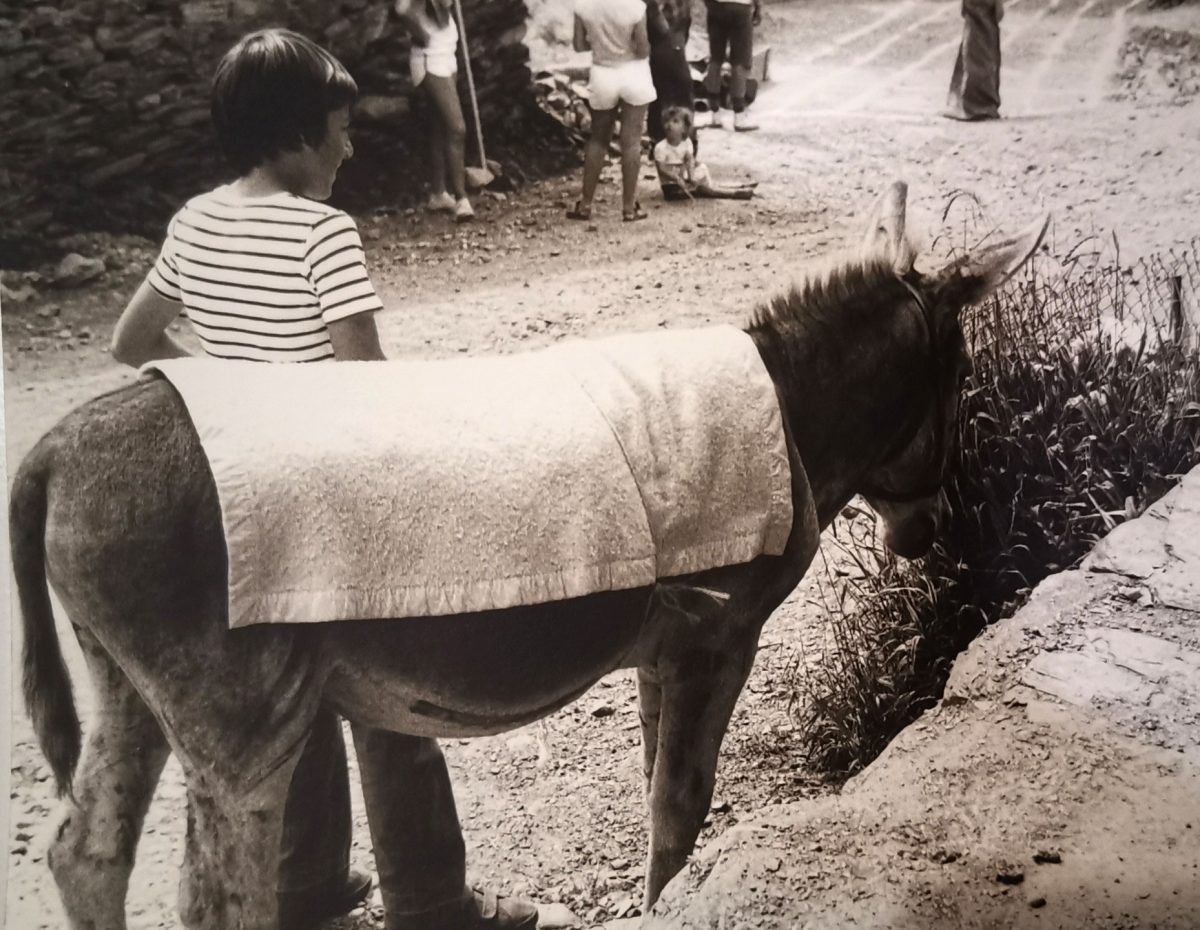The village of Villard-Reculas
Villard-Reculas was the first partner resort of Alpe d’Huez in 1946, thanks to a button lift between the two areas. Thanks to its residents, the resort has managed to protect its identity even though it is at the heart of one of the biggest and most modern ski areas of the Alps.
Over time, the village was transformed into a resort, but still managed to keep the authenticity of the ancient buildings here. The warm and cosy chalets reflect this traditional nature of the village and make this undoubtedly the most charming of the Alpe d’Huez Grand Domaine Ski area resorts.
Villard-Reculas stands at an altitude of 1,500 metres on a south-facing balcony cliff, overlooking Bourg-d’Oisans and Romanche and Eau d’Olle valleys. There is also an exceptional view of the Oisans peaks from here.
More than 70 years of skiing!
In the winter of 1946-1947, two experienced skiers set up the very first button lift, connecting Villard-Reculas to Alpe d’Huez. This button lift was very technical back then and was the third one in the whole ski area.
Today, the Villard-Reculas sector, with its 20 km of slopes and 8 high-performance ski lifts, and equipped with cutting-edge snow cannons, is a perfect addition to the 250 km of slopes at the Alpe d’Huez Grand Domaine Ski area.
The village of Villard-Reculas in 1971
Episodes 1 and 2
Since the 12th century
The Villard-Reculas parish was founded in 1172 under the name Ecclesia de Reculatis, and is one of four villages in Eau d’Olle valley. It is the perfect example of a hilltop village on the Oisans mountainsides, with great sun exposure, spectacular scenery and overlooking the Bourg d’Oisans plain down below.
In around 1360, the chapel of Sainte Catherine was built, and was for a long time the only place of worship here. Today, it has been replaced by the Ferme du Clôt, but the chapel was once used as a means to communicate with the surrounding villages. In 1620, the chapel of Notre Dame de la Pitié de Saint Pierre was built in the village by the local council for winter services, and then became the permanent church after a devastating fire in 1747. It was only in 1757 that the church we can see today was rebuilt in the centre of the village and dedicated to Saint John the Baptist.
Story about the route of Confession
The Route de la Confession was the very first access road to Villard-Reculas, and it is truly exceptional thanks to its construction (a real feat for that era), its location between two cliffs, its legend (resulting in its name) and the breathtaking view. On the road between Huez and Villard-Reculas, there is a mysterious signpost attached to the side of the cliff, bearing the name Pas de la Confession, because, as legend goes, those who venture along this treacherous road need to have a clear conscience!
The legend of the Confession
Only the purest of souls could take this narrow and daunting road – especially for those who are afraid of heights – with the risk of falling stones (chamois lived on the mountainsides up above). The locals therefore thought themselves to be good, moral citizens. People would stop off at the oratory at the beginning of the road on the Huez side, to confess before venturing along the road.
Back then, this road was gladly welcomed by the people of the village because before that, they could only reach the valley along the “Vieille Morte” path (hamlet in Romanche valley). This path could not be used in the winter so they had to go over the villages, across the Huez Alpine pastures (hence the name Alpe d’Huez) and the village of Huez.
Until 1980, this was the only road to get to Villard-Reculas. After that, the town was made more accessible thanks to the road leading to Allemond in the valley.







